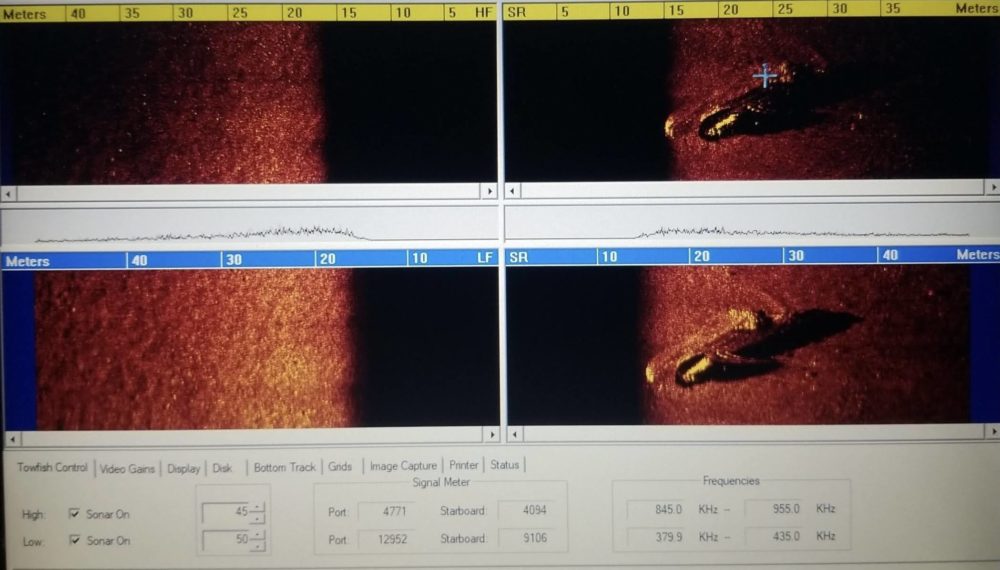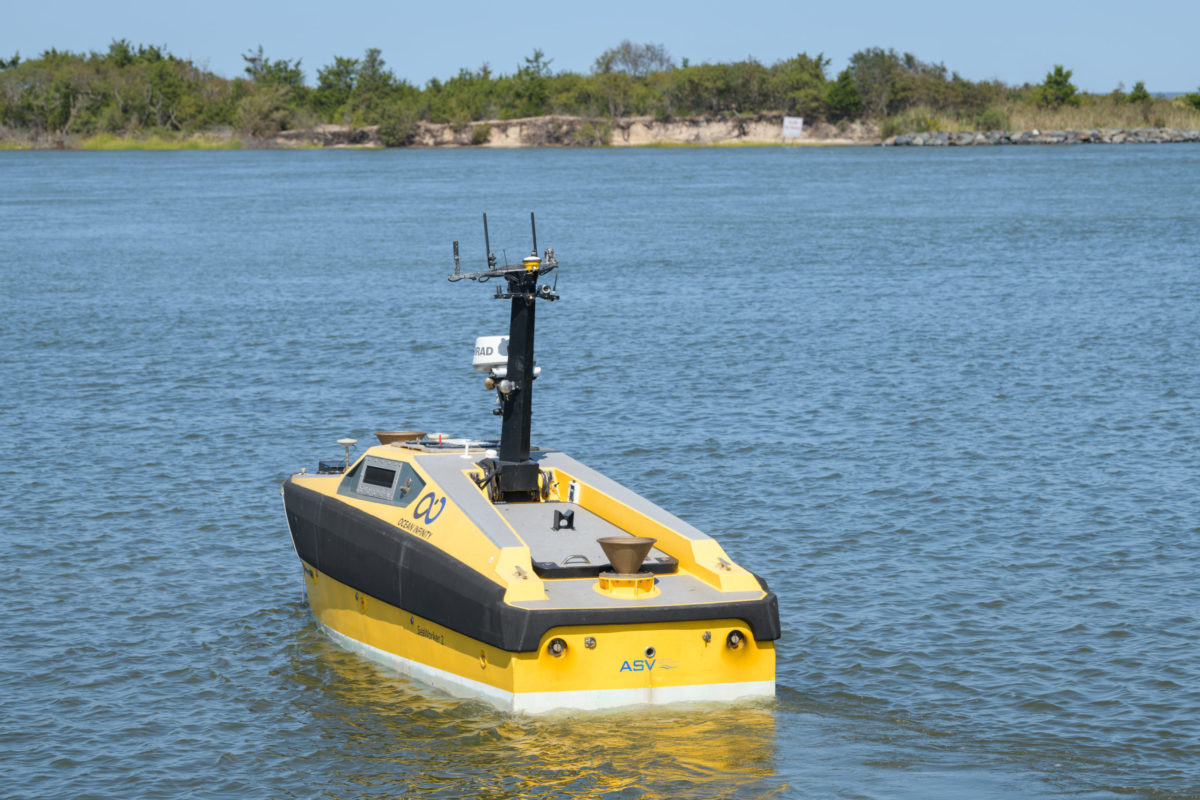On Dec. 14, with a nor’easter in the forecast, an unmanned tugboat called Miss Aida was being towed from the Delaware Bay to Virginia. Near the mouth of the bay, it took on water and sank.
Fortunately, no one was hurt, but the sunken tugboat was a potential hazard to vessel traffic, especially the large barges that frequently travel the bay. The U.S. Coast Guard needed to locate the boat, and fast, as the nor’easter that would storm the next day bore down. Local pilots lent a hand, but what they really needed was something that could explore under the water.
As it happens, the University of Delaware has a small fleet of four autonomous surface vessels (ASVs), aka “robot boats,” received through a partnership forged with Austin-based marine robotics company Ocean Infinity in 2018.
Art Trembanis, associate professor marine science and policy at UD’s Hugh R. Sharp campus in Lewes, got the call the day Miss Aida went down as he was out on the water of Indian River Bay on a mapping project.
“I operate a research lab with underwater robots to study storm effects to beaches and shipwrecks,” Trembanis told Technical.ly. “So when a ship becomes wrecked, it’s in my wheelhouse.”
Two of the department’s graduate students had two ASVs out in the water, and they volunteered to help.
“Suddenly, it became not a drill, but a real case to respond to,” Trembanis said.
The decision to use surface robots rather than underwater robots was a simple matter of speed, he said. They were quicker to mobilize as the storm neared, and require less staff. And, because Miss Aida had recently gone down and they knew the general location, the ASVs with underwater tow sonar were able to locate the vessel in less time than it took to mobilize.
They found it about 80 feet down, sitting upright.

“Based on the surveys we did, they were able to issue a notification to mariners,” said Trembanis. The vessel was marked so it will show up on other vessels’ navigation equipment as if it’s on the surface.
Because of the subsequent storm, Miss Aida has not yet been recovered. Trembanis notes that, while some large objects — such as old (deep-cleaned) subway cars — are sometimes submerged off the coast to create artificial reefs, the tugboat had various items, fuel and oil on board, making it an environmental as well as a navigational hazard.
The real-world effort shows how robotics technology is becoming a big part of marine science — but it’s not ubiquitous yet.
“There’s no other university in the U.S. or world that I’m aware of that has one [ASV], let alone four,” said Trembanis, noting that each costs about $2.5 million.
“[Ocean Infinity] is sending some autonomous underwater vehicles (AUV) our way in January,” he said. “I think it’s a great example of a very unique public-private partnership, and not just public-private, but public-private-agencies, because we had the Coast Guard and the Lewes Fire Department responding [knowing] our robotics lab’s unique capabilities, and we were able to help them out. This was our first time testing that.”







